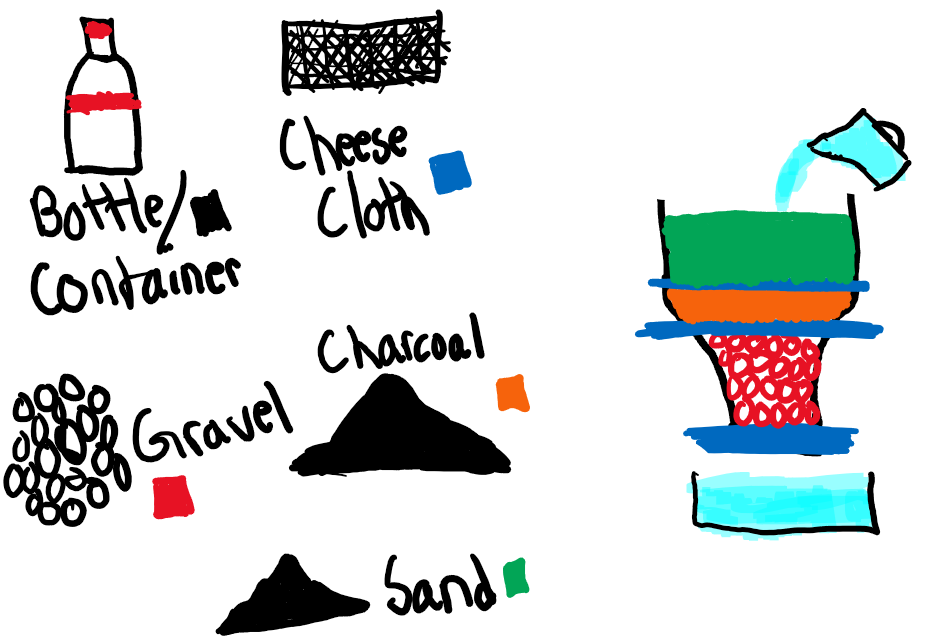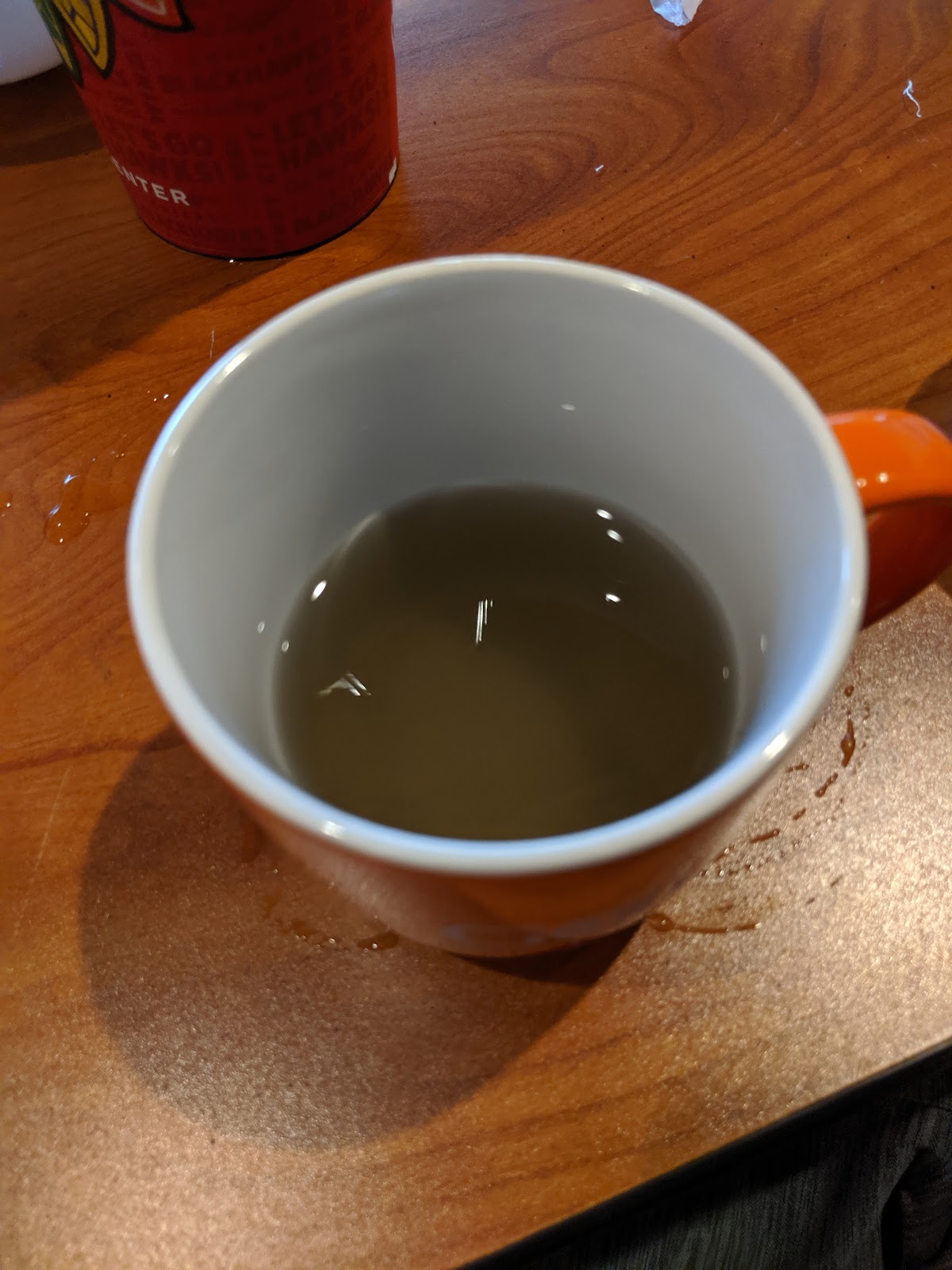In my STEAM, Water class we, as a class, mainly focused on filtration. In class we built our own small, sort of knockoff water filters. This included using plastic cups and coffee filters or using sand to relate to groundwater filtration. We learned about the pH of the water which shows whether the water is alkaline (basic) or acidic. This branched out to working on logarithms which we learned are the inverse of exponents. By working with logarithms I discovered how that and pH are so closely related. You can use the pH to find how many hydrogen plus ions there are in the water or its concentration. By doing the reverse, you know the concentration and are trying to solve for the pH. Since we talked about hydrogen ions we had to recover chemistry. Our field experience of this part of the unit was adventuring to the Jardine Water Filtration plant in Chicago. In our tour of the plant, the workers extract water from Lake Michigan, filter it, and that is then transported across the network of the city through pipes. Recently we were assigned to build our own water filters. All filters had to be designed similar to groundwater filtration. Groundwater filtration is the filtering of water through the Earth’s surface and the water either from r
ain or another source can proceed through rocks, sand, dirt, etc. and especially natural. When talking about groundwater filtration in soil the process is similar.
A target for the process of designing and building the filters was to choose natural items that we thought would work for our filters. The materials that I chose were cheesecloth, gravel, sand, and activated carbon which is additionally known as charcoal pieces. I also used a plastic bottle and reusable cup to hold the filter and collect the exiting water that has been filtered through. I first closed the top of the bottle with cheesecloth so the gravel and other materials did not fall out. I cut a round hole in the bottom of the bottle so I could place and pour materials into the bottle. Next, I poured in some gravel just past the end of the neck of the bottle. I poured some smaller rocks on top of that. From there I placed a cheesecloth where sand was poured on top of that. After placing another cheesecloth I included the activated carbon. I wanted to be able to reuse this filter so I placed another cheesecloth which made a small basket that could hold the items that do not make it through. If I wanted to try different water I could take out the top cloth with the sticks or leaves in it and replace it. While observing one of the original processes of filtering water, I thought that the materials used would be good for making a filter of my own. The design was similar to the one that I had created, except there was no separation between the materials and had pipes to pump water into it rather than pouring it into the model. Instead of layering each main material on top of one another I included a strip of cheesecloth in between to hopefully add to the treatment process. I additionally needed a material that water could filter through but stop the other materials like gravel from falling out and into the collection system of cleaner water. The filter that I have created is similar to groundwater filtration because the water travels through the sand and down into the gravel just like it would where there is water soaking into the sand on a beach for example.
 |
GS, Water Filter, 30 Oct. 2019
|
 |
| GS, Sketched Filter Model, 29 Oct. 2019 |
Another step for this project was to conduct an experiment with dirty water and our filters. My initial question was, “How much water will be left over after it has been filtered?” My hypothesis for this experiment was, “If I pour I cup of dirty water into the filter, then that same one cup will come out cleaner than it was before, because my filter works well enough so that I can see the difference from before and after the filtration.” The water that I got for this experiment came from the rain and I included some dirt. The water was already a bit dirty because it was in the street. The pH of the water was a 7.4 which means that the water is still in the range where it is okay to drink. After filtering the water, I found that the pH became a 7. On the pH scale, 7 is the number that starts the basic or alkaline pH of water. Anything below is acidic. The change in my water was .4 which means that my dirty water is 2.5 times more basic than the water I got after filtering. This is because 10 to the power of .4 is 2.5. Before testing my filter the water was very dirty. It didn’t smell too bad but I did get it from the side of the road. The water also had a lot of dirt in it and even some sticks. After, the water definitely had no dirt or other plant material in it. The water did smell the same. I noticed that because of using charcoal or activated carbon, the water took the soot from it and that ended up in the water. The water did seem to be a little darker but you could see that there wasn’t any dirt or sticks inside of it.


GS, Before/After Water, 30 Oct. 2019
As said before, the pH of the water before was 7.4 and after was 7. Both of these water samples are basic and they are not highly alkaline. If I want to know the concentration of the water I need to find how many hydrogen plus ions there are in my water samples. I take the pH and make it a negative exponent to ten where that would turn into 4 over 10,000,000 or 4 times 10 to the 7th power.
Comments
Post a Comment